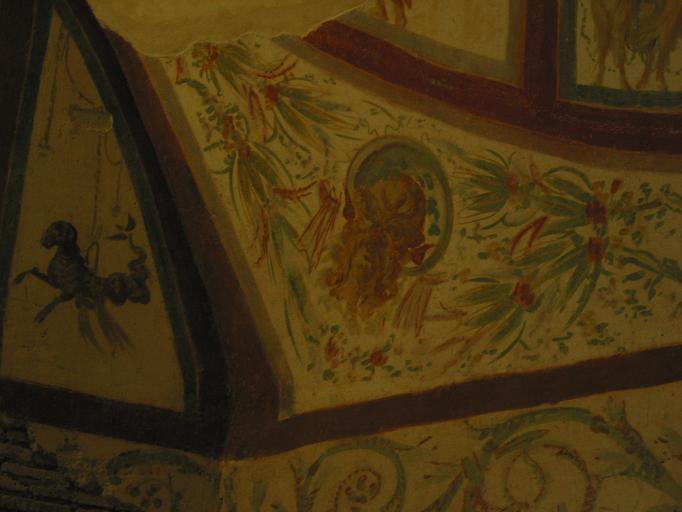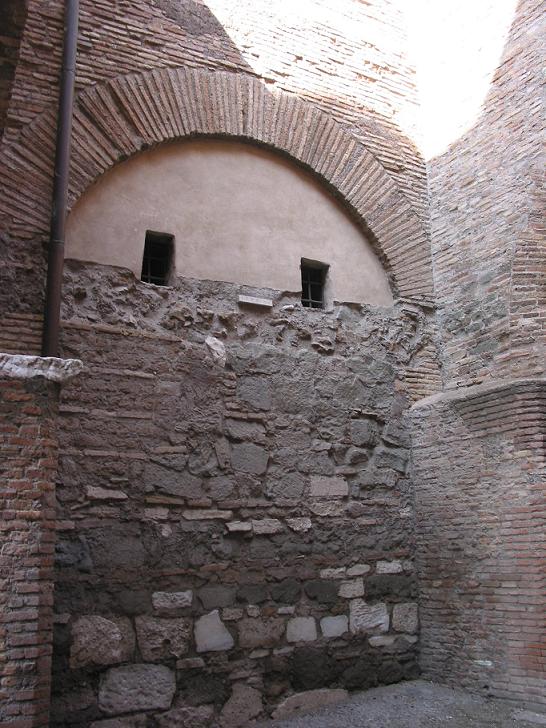|
|
 |
|
090105 Layers of Roman Homes |
|
written
by sariah / 09.07.2005 |
|
|
| |
Itinerary |
| |
Ending our second week in Rome, most of us have found a favorite breakfast routine: either selecting fresh fruit from nearby produce stalls at Campo de Fiori or greeting favorite barristas to order coffee and croissants. So far, the weather at this time of the morning seems invariably perfect- a cool breeze mixed with sunshine.
At 9:00 am, Italian class is our first scheduled activity of the day. We have already learned how to pronounce basic letter combinations and introductions, and now we are studying phrases for purchasing food items. Although most of us have already practiced similar phrases while trying to make previous food purchases, reviewing vocabulary and sentences more slowly has been invaluable for the rapid-fire speaking comprehension required in real shopping. During today's break in language instruction, we split into pairs to complete the assignment of using our Italian phrases to buy specific food items at the Campo de Fiori market. In the process, not only do we get to practice our Italian, but also learn about Italian ingredients such as currents, chard and fresh Minestrone vegetable mix. After Italian class, we break for a couple hours until our next scheduled meeting. Some of us use the time to catch-up on creative writing assignments, while others take a gelato break or wander around the city.
It is a typical, hot afternoon as we skirt the packs of tourists in the Forum to arrive next to the Arch of Constantine at 3:40 pm. From here, we move past the Colosseum towards the preserved Roman houses which comprise our field site for the day. These houses are buried beneath the Church of Ss. Giovanni e Paolo and preserved in time-stratified layers, the deepest layer corresponding to the oldest, third century housing. The site of the museum was uncovered by Father Giovanni as he excavated grounds beneath the Church while searching for the martyred bodies of John and Paul. As we wind through the dark, humid corridors of the buried apartments, our friendly and enthusiastic guide, Valentina, highlights areas of interest. Particularly unique are the painted, pagan murals sponged away by Father Giovanni in order to preserve a sense of modesty at a holy site of martyrdom.
After our tour ends, we have the rest of the day for ourselves. Some classmates venture to a nearby park up the hill from the Church of Ss. Giovanni e Paolo for a bit of relaxation before returning to the Rome Center to complete homework assignments for the following day.
|
| |
|
| |
|
| |
Highlights |
| |
After the group split apart, I spent the rest of the afternoon visiting the site of my art history presentation, the Campidoglio or traditional seat of Roman civil government. Working to identify the different statues and interesting architectural features of the site, I stayed until just after dark. As night falls, the Campidoglio becomes enveloped in a warm glow of yellow light from the setting sun. The bronze statue of Marcus Aurelius on his galloping horse is central to the scene. One of the highlights of my day is to sit on the steps for a few minutes and watch people transverse the glowing square.
|
| |
|
| |
|
| |
Images |
| |
| |

|
| By Zinnia Zheng |
| Aula Dell’Orante |
| The interior, detailed decorations of Aula Dell’Orante lie underneath the church of Ss. Giovanni e Paolo.
|
| |
|
| |

|
| By Zinnia Zheng |
| Roman Housing Exteriors |
| The worn brickwork exterior of the Roman houses is near the entrance to the housing museum. |
| |
|
|
| |
|
| |
|
|
 |
|
